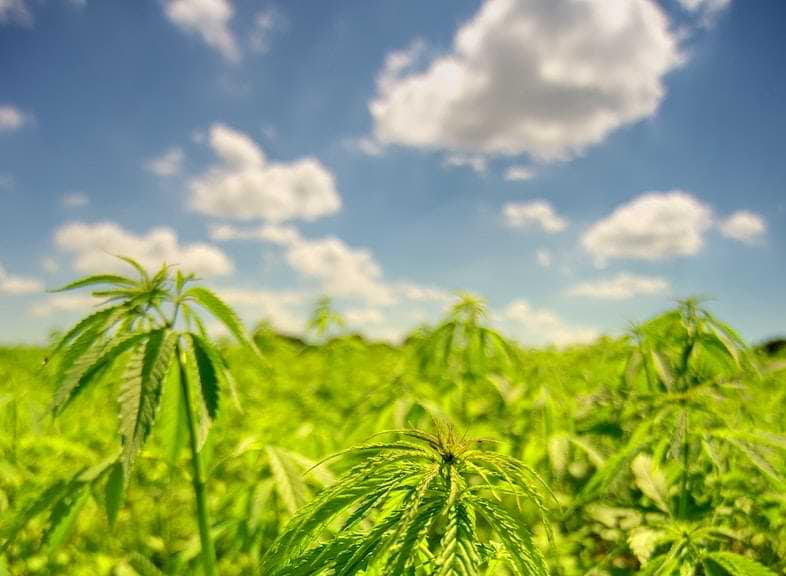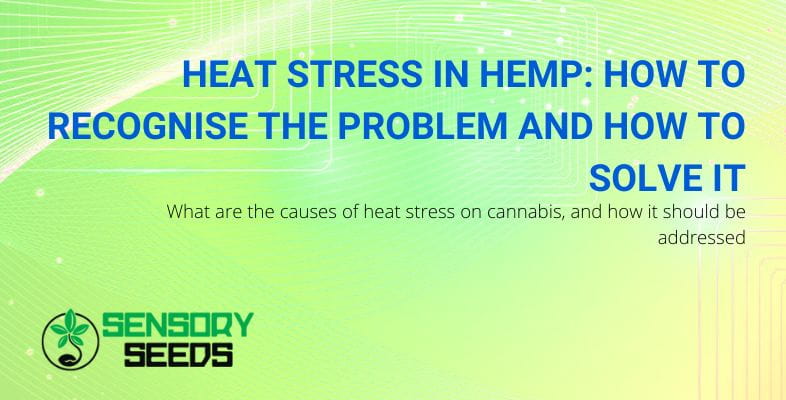Modified on: 21/09/2022
What are the causes of heat stress on cannabis and how it should be addressed
From the moment the marijuana seeds are germinated until they are harvested, this plant goes through two main phases: vegetative and flowering. During their life, hemp plants may be subject to problems caused by over-fertilisation, over-watering, poor nutrient supply or heat stress.
In the following few lines, you will find out what thermal stress causes can be, how it manifests itself and how it can be avoided.
What can cause heat stress in hemp
When does cannabis suffer from this particular condition? Although low temperatures are the plant’s enemy, and it develops best when the weather is mild, excessive heat can cause problems for its biochemistry.
Thermal stress is not only related to too much light and heat to which plants are exposed but also to other aspects. For example, the problem arises in outdoor cultivation when plants are exposed to direct sunlight and temperatures exceed 30°C. In addition, if the humidity in the air and substrate is low, they struggle to activate the defence mechanism known as ‘transpiration’.


Another factor that can promote and accelerate heat stress is the presence of burns from over-fertilisation or nutritional deficiencies. In both cases, the plants take the brunt of the blow because they are not in optimal health.
In indoor cultivation, on the other hand, in addition to the problems already mentioned, the condition of cannabis may be aggravated by poor ventilation in a closed environment or excessive artificial lighting. Before we understand how this problem (which, in addition to limiting the growth and productivity of plants, can threaten their survival) can be prevented or remedied, let us see how it manifests itself.
The most characteristic sign of a hemp plant suffering from heat stress is the presence of upward curled leaves. The parts of the plant that first show these symptoms are the higher, peripheral parts (as they are more exposed to direct light); brown or yellow spots can also be seen on them. These signs are pretty frequent during the vegetative phase, while during the flowering stage, the hemp may show another symptom, namely the formation of new buds and leaves. This is a self-defence mechanism that plants put in place to survive.
Read also: Phosphorus deficiency in hemp: what are the symptoms and remedies for this nutrient imbalance
Thermal stress hemp: what to do outdoors
In outdoor cultivation, it is advisable to adopt a few tricks to prevent the heat and light from stressing the plants, especially in places where the climate is torrid. First, it is essential to schedule watering appropriately and water the plants at the most incredible times, i.e. early in the morning or the evening. Watering the plants during the times when there are peaks of heat and sunshine, there is a risk that the water droplets will end up on the leaves and attract light.
But that is not enough.
During the hottest hours, it would be helpful to shelter the plants from the sun’s rays. For this reason, it is advisable not to grow hemp plants directly in the ground but in pots so they can be sheltered when the sun is beating down. However, if this is impossible, one could consider creating a temporary cover (a tarp or cloth) to protect the plants during the hottest hours of the day.


How to prevent hemp heat stress in indoor cultivation
To cultivate cannabis indoors and avoid heat stress problems, it is essential to have specific equipment available and to manage it properly. For example, in cases where it is necessary to provide artificial light to the plants, the lamps must be placed at the proper distance to prevent them from receiving too much heat.
In warmer locations, even keeping the light sources at an appropriate distance may create an environment that is too hot for hemp. In some cases, it may be sufficient to use LED lamps, which produce less heat than others.
If this is not enough, it is necessary to ventilate the greenhouse with fans and – if necessary – with an extraction system to ensure a change of air that prevents overheating. In some places, however, the outside temperatures may be so high that the work of the fans is insufficient. Therefore, to avoid exposing the plants to heat stress, it would be an excellent idea to air-condition the room (at least at the most critical times).
Read also: Cannabis milk: how it is prepared and what its effects are
In conclusion
In this article, we have explained the phenomenon of heat stress in hemp and set out the methods used by growers to prevent and counteract it. First, however, we would like to remind you that planting autoflowering, fast-flowering and feminized seeds without authorisation are illegal.
Consequently, if you have a passion for cannabis and want to buy seeds online, know that you can only do so for collecting purposes. At Sensoryseeds, we have a wide range of certified weed seeds. So come and discover them on our site!









